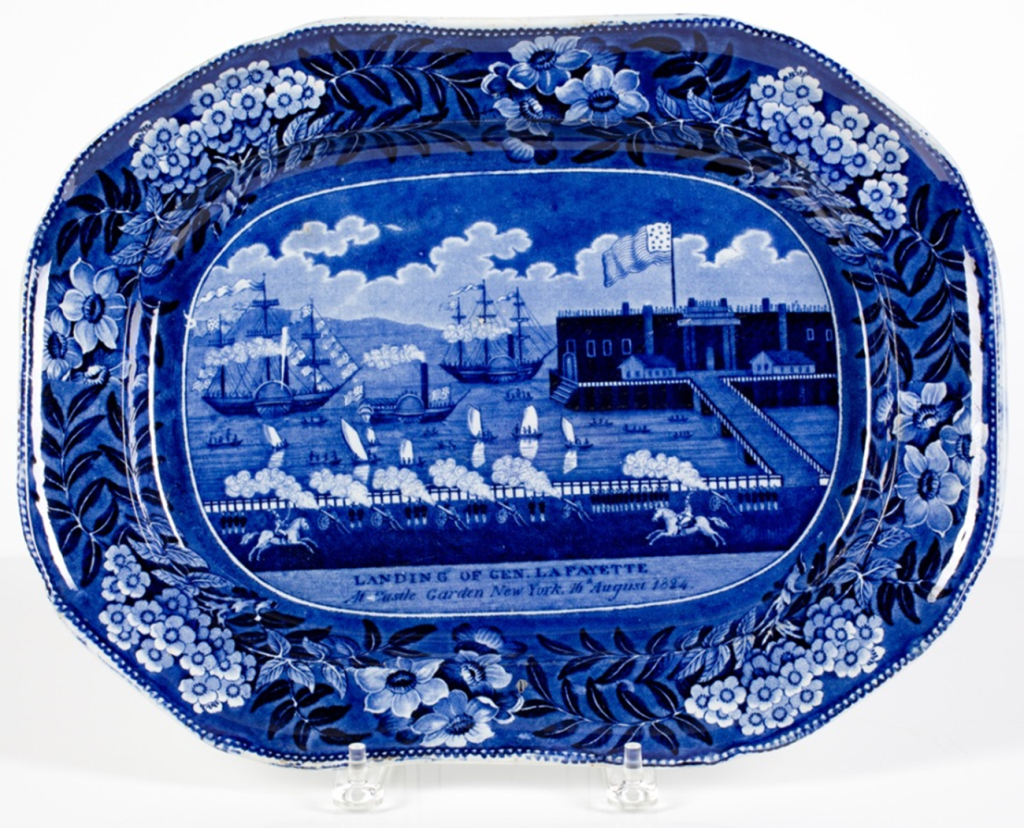
In his 1913 “Report of the Librarian” published in the AAS Proceedings, Clarence Brigham concludes with an account of “one of the most valuable gifts ever received by the Society.” It was a collection of some 300 pieces of Staffordshire with American scenes. “It is particularly appropriate,” noted Brigham, “that the Society, which already possesses such a fine collection of American prints and engravings, should now acquire the remarkable series of early views preserved in old Staffordshire ware. Some of the century-old pictures of American cities are known only through the medium of this blue ware and hence are eagerly sought by collectors.”
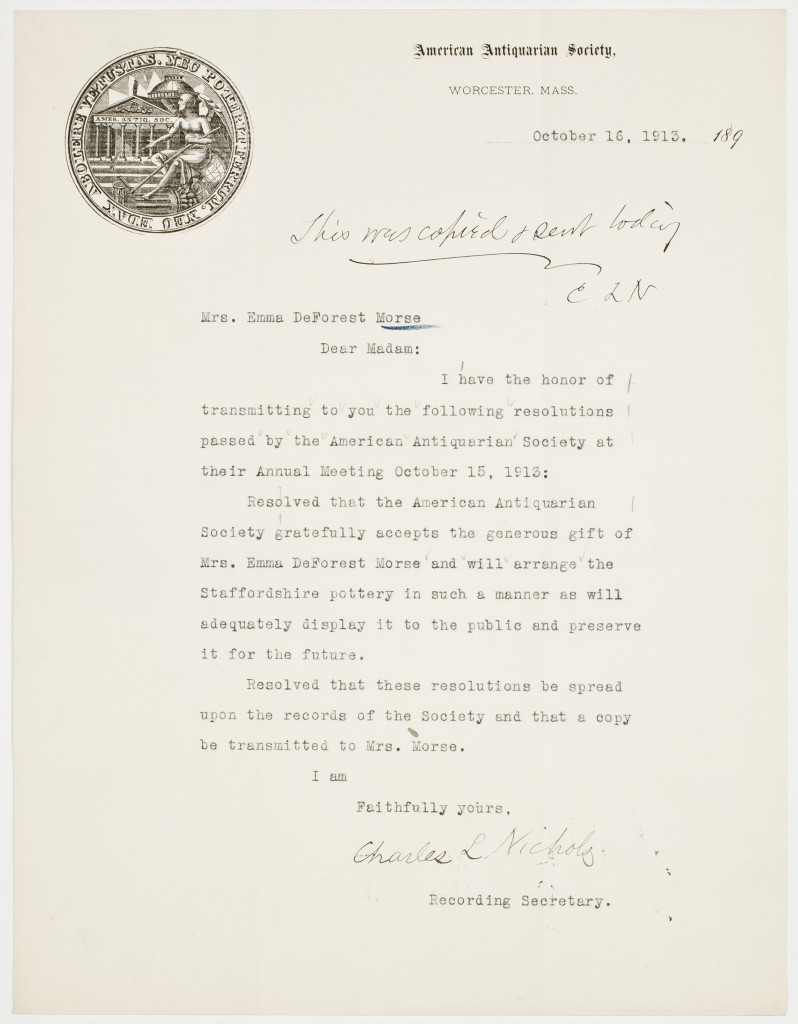
Brigham was right about the significance of the collection. He even goes on to quote Alexander M. Hudnut from an article in American Homes and Gardens (1907) that states that the donor, Mrs. Emma DeF. Morse of Worcester, MA, gathered “the finest collection of dark blue Staffordshire in America.” What Brigham didn’t get right, however, was Morse’s name. In this formal record of the Morse’s donation he lists her name as “Mrs. Emma DeForest Morse.” Similarly, the copy of the letter in the AAS archives sent to Mrs. Morse the day after the Annual Meeting by Recording Secretary Charles L. Nichols is addressed to Mrs. Emma DeForest Morse. The collection, which is still on view for visitors to the Society (per Mrs. Morse’s wish in her deed of gift), has been known as the Emma DeForest Morse Collections ever since. Until now.
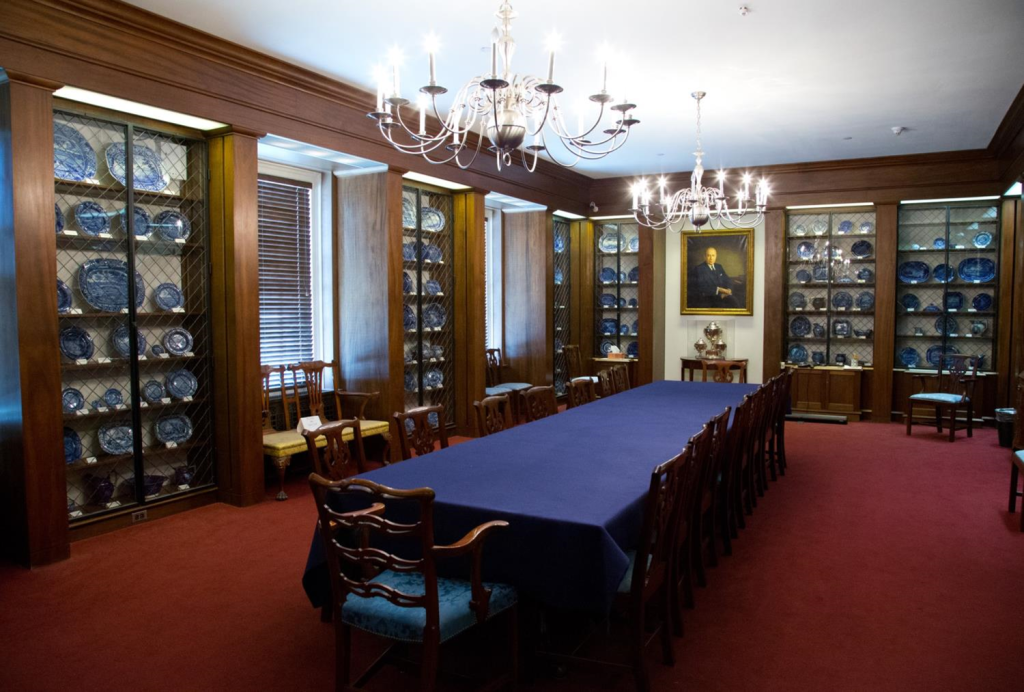
A recent short-term visual culture fellow at AAS, Anne Anderson, studied Morse’s life as part of her larger project on chinamania in Britain and America in the late nineteenth and early twentieth centuries. Morse, like other collectors, was caught up in the desire to collect and display old blue Staffordshire. According to Waldo Lincoln’s Report to the AAS Council in 1913 Mrs. Morse found the preservation of the collection in her home to be “too much of a burden” and in spite of the offers of eager buyers, decided to donate the collection to the American Antiquarian Society to keep the collection intact and for public display. What Anderson discovered in her attempt to recover Morse’s biography and to place her within the context of collecting circles in America was that Morse was born Emma DeFrance Bancroft, making her real name Emma DeFrance Morse upon her marriage to Edwin Morse in 1868. Anderson believes Emma’s middle name may have been given in honor of her father’s first name, France, listed on the registration of Emma’s birth on December 33, 1846.
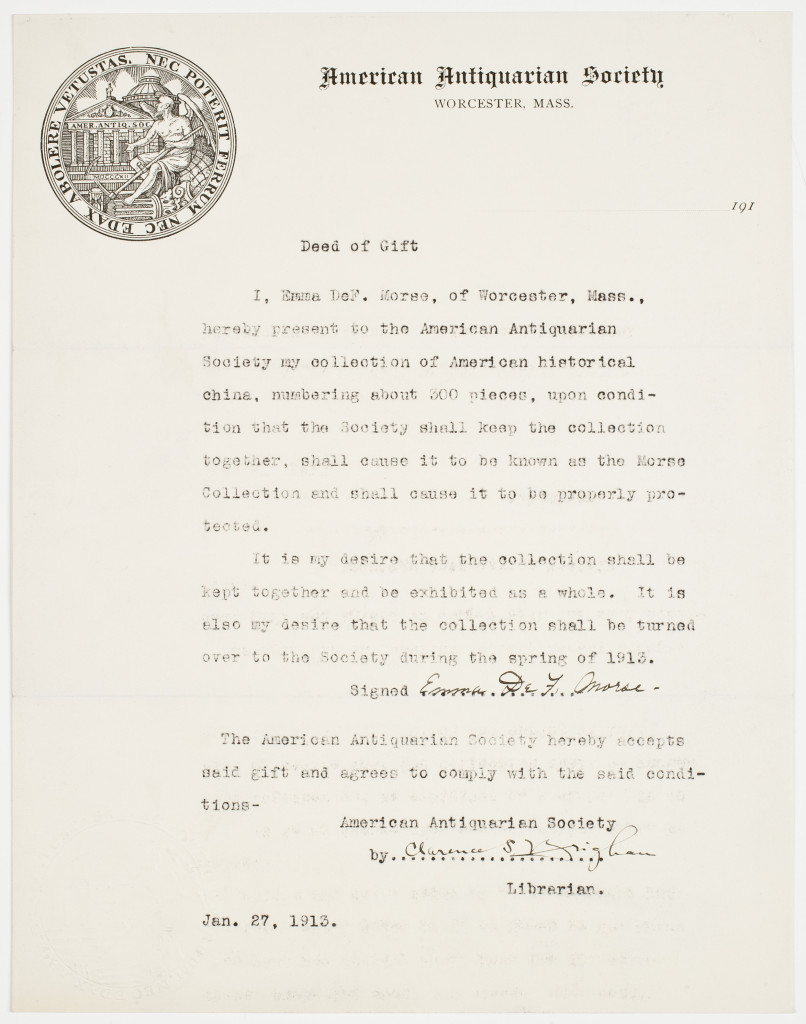
It seems that Morse may have used the shortened version of her name “Emma DeF. Morse” as matter of course, thus contributing to the confusion. It is, in fact, the way she signed the Deed of Gift to turn the Staffordshire collection over to the Society in January of 1913. Clarence Brigham signed the same document, but somehow between that transaction and the report filed by Brigham in October, the DeF. became DeForest. At this point we do not know why the name was presumed to be DeForest. Indeed, in documents from 1913 to present day both “DeF. Morse” and “DeForest Morse” are used interchangeably, but never DeFrance. Perhaps Emma didn’t like the name DeFrance as a collector of Americana? The Society will make note of the name Emma DeFrance Morse for the historical record but perhaps in deference to how Morse signed her own name we should use Emma DeF. Morse—or simply Emma Morse.
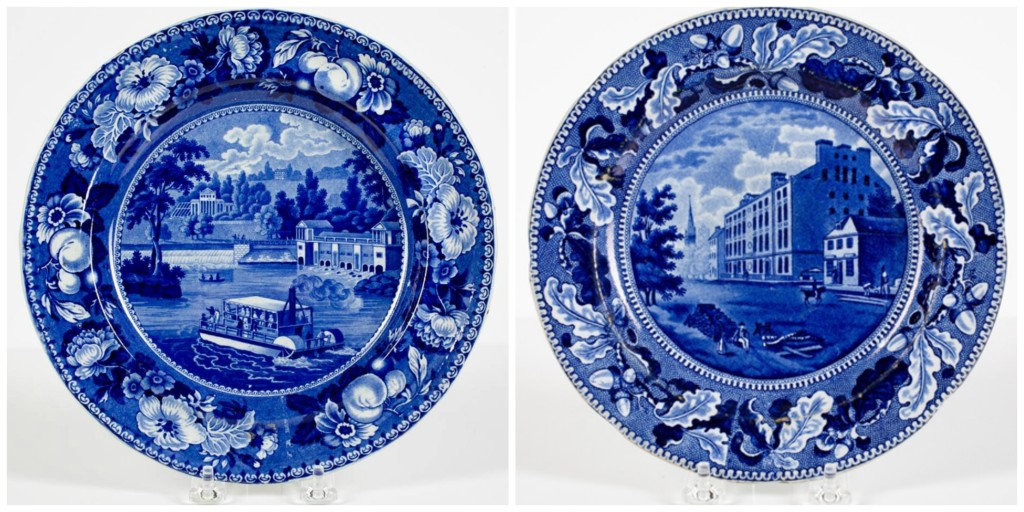

This is similar to what happened with the painter Fitz Henry Lane — he signed as “Fitz H. Lane” and people assumed (for 150 years) that the H was for Hugh.
So true! I’m sure there are people who still have to stop and think before they say his name because for so long it was Hugh rather than Henry. The same may be true for Morse as we try to refrain from saying DeForest!